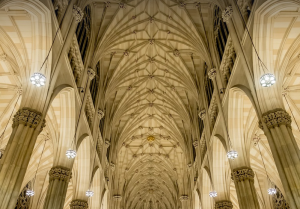
Unveiling the Magic of Architectural Ornament
Architecture is more than just bricks and mortar; it’s about creating spaces that captivate our senses, evoke emotion, and connect us to history. And at the heart of this artistry lies architectural ornament – a captivating language of forms and details that elevate buildings from mere structures into vibrant works of art. Let’s delve into the fascinating world of these decorative elements and explore how they add beauty, meaning, and functionality to our built environment.
Architectural ornament is far from just fancy flourishes; it serves a crucial purpose within architecture. It adds visual interest and personality, creating depth and complexity in designs. Think about those intricate carvings on a cathedral’s facade or the delicate floral motifs adorning a stately home. These details go beyond mere aesthetics, acting as subtle storytelling devices that reveal hidden meanings and histories.
But there’s so much more to architectural ornament than meets the eye. It’s a tapestry woven with diverse threads of culture, history, and technology. Each ornament tells a story about the people who created it, whispering tales from different eras through their unique forms.
Let’s start by understanding the different types of ornament we encounter:
- The first type is **geometric ornament**, often found in classical architecture. This includes elaborate patterns like spirals, stars, and chevrons, inspired by mathematical principles and ancient cultures.
- **Natural forms** are another category. Think of the flowing curves of a Romanesque arch or the delicate leaves of a Gothic window; these ornaments draw inspiration from the beauty of nature, mirroring its organic structures in their design.
- Then there’s **symbolic ornament**, imbued with deeper meanings and cultural narratives. Think about the intricate carvings on Islamic mosques that depict sacred stories, or Hindu temple towers adorned with symbolic figures representing deities. These ornaments speak volumes about the beliefs and values of those who created them.
Beyond these general categories, we see specific ornament styles evolve across different historical periods. From the Renaissance’s elegant floral motifs to the Art Nouveau’s fluid lines and patterns, each era contributes unique forms and flourishes to architectural expression.
Architectural ornament is a dynamic field, constantly evolving and adapting to new trends and sensibilities. It’s a testament to humanity’s drive to express ourselves through creative means – whether it be through the meticulous detailing of a Gothic cathedral or the playful curves of a modern skyscraper.
So, how do you approach studying architectural ornament?
- **Start with the basics**: The foundation is key. Understand the principles of geometry, proportion, and symmetry, which form the framework for many artistic styles.
- **Explore different historical periods**: Each era has its own unique ornament style. Learn about classical Greek architecture, the intricate patterns of Islamic art, or the playful motifs of Art Deco.
- **Study specific examples**: Take a close look at different buildings and their ornamentation. Analyze how these details interact with each other, create balance, and tell stories.
The study of architectural ornament is not just about historical knowledge; it’s also about appreciating the beauty and artistry that architects bring to life through design. It’s a journey into the heart of human creativity, where imagination meets practicality to produce breathtaking results. Remember, even small details can make a huge impact on the overall aesthetic.
To delve deeper into this fascinating world, I recommend exploring some resources:
- **Books:** Explore books like “The Architecture of Ornament” by James Stirling or “Building Ornament” by David A. K. Smith for in-depth analysis and historical context
- **Online Resources**: Websites like the Victorian Society or the American Institute of Architects (AIA) offer online resources, articles, and exhibitions dedicated to architectural ornament
- **Museums & Galleries:** Many museums feature exhibits showcasing decorative arts, including their architectural counterparts. Visiting these spaces can provide a visual feast and spark your imagination
So go forth and explore! The world of architectural ornament is waiting to be discovered.



